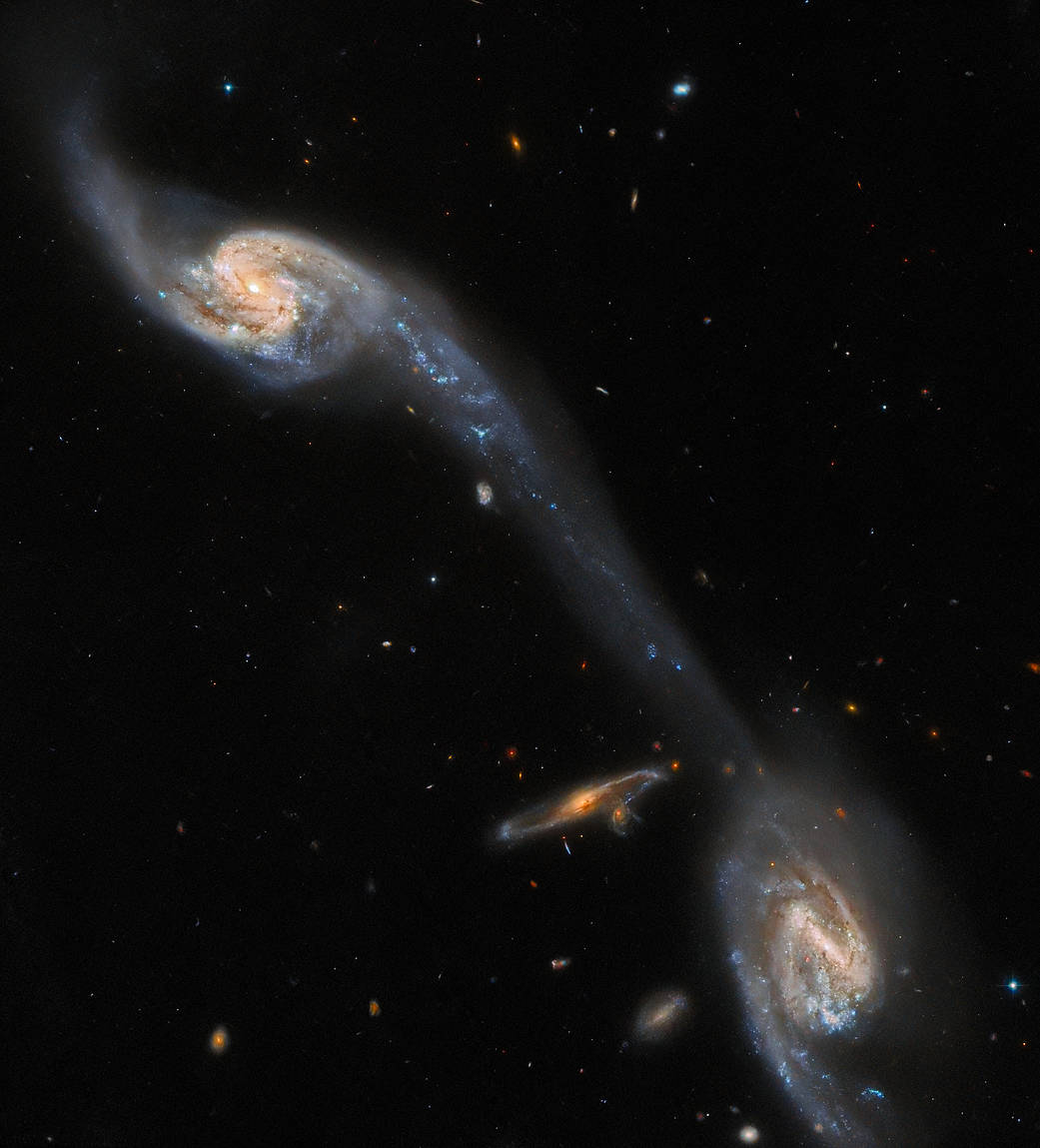The Hubble Space Telescope has taken an incredible picture of the galactic system Arp 248, also known as Wild’s Triplet. These three interacting galaxies are renowned for having a luminous bridge of stars between two of them, an indication of the merging process that is underway between these objects.
The image was released by the European Space Agency last week, and it has a spectacular example of a feature that astronomers call a tidal bridge. As galaxies approach each other, they begin to interact gravitationally. It is possible for galaxies to just slam into one another (the cartwheel galaxy being one of those) but often, mergers will start with a slow dance, with galaxies getting close to each other before moving back away again.
The galaxies will eventually become one. But, during the close passages, they can distort each other (like the third member of the triplet in the middle) and even tug at their spiral arms so much that, as the tidal forces stretch them, they connect into these bridges. The one in this picture is a splendid example of them.

The incredible Arp 248, also known as Wild’s Triplet. Image credit: ESA/Hubble & NASA, Dark Energy Survey/DOE/FNAL/DECam/CTIO/NOIRLab/NSF/AURA, J. Dalcanton
The galaxies are located about 200 million light-years away, but to see similar effects we can look much closer to home. The Milky Way is surrounded by smaller galaxies. Some of them have already been cannibalized by our home in the cosmos, such as the Gaia-Enceladus-Sausage galaxy. Others are on a slower merging path.
Among them, there are the Large and Small Magellanic Clouds. These two dwarf galaxies are visible to the naked eye in the Southern hemisphere, and as they move around the Milky Way they interact with our galaxy and themselves. A ribbon of gas connects the Milky Way to them, known as the Magellanic stream, and there is a bridge between the two Magellanic clouds with a few stars, a lot of gas, and a weak magnetic field. Not as spectacular as Arp 248, but still an indication that a merger has begun.
Wild’s Triplet takes its name from British-born and Australia-based astronomer Paul Wild who studied this interacting trio in the 1950s. The classification of Arp 248 comes from its inclusion in the Atlas of Peculiar Galaxies, a catalog of galaxies with unusual shapes produced by American astronomer Halton Arp in 1966. Among them, there are the Antennae Galaxies, the Whirlpool Galaxy, and the Mice Galaxies. Hubble is studying peculiar galaxies to find intriguing candidates for future studies with the telescope, as well as JWST and the Atacama Large Millimeter/submillimeter Array.
Source Link: Hubble Spots Galaxy Pair Connected By Luminous Stellar Bridge